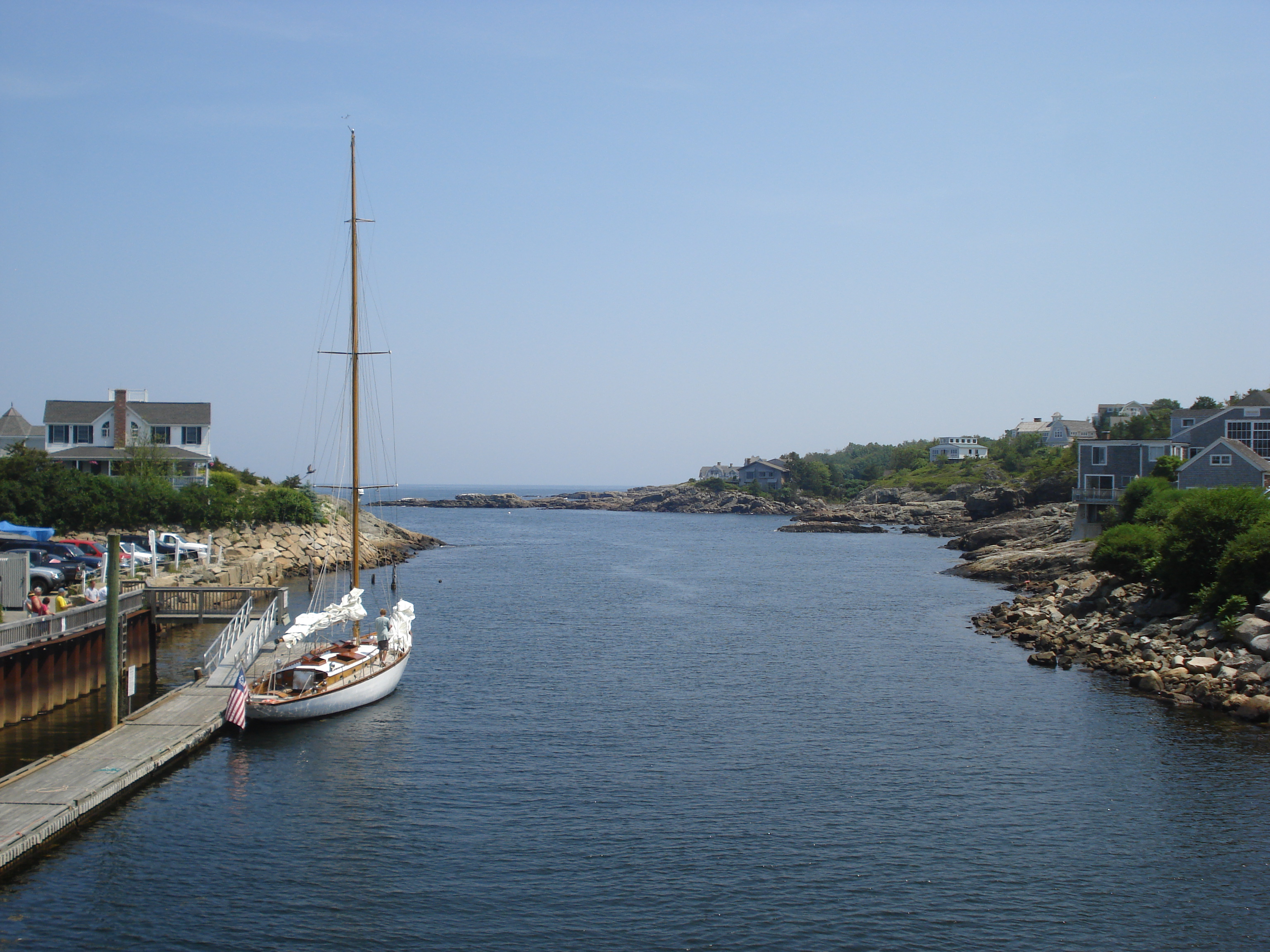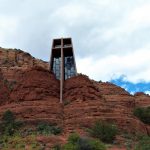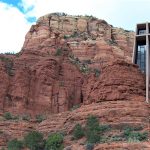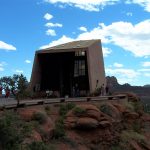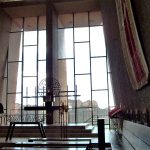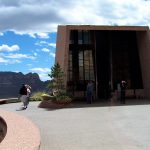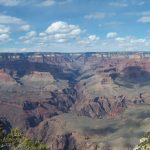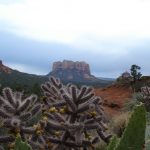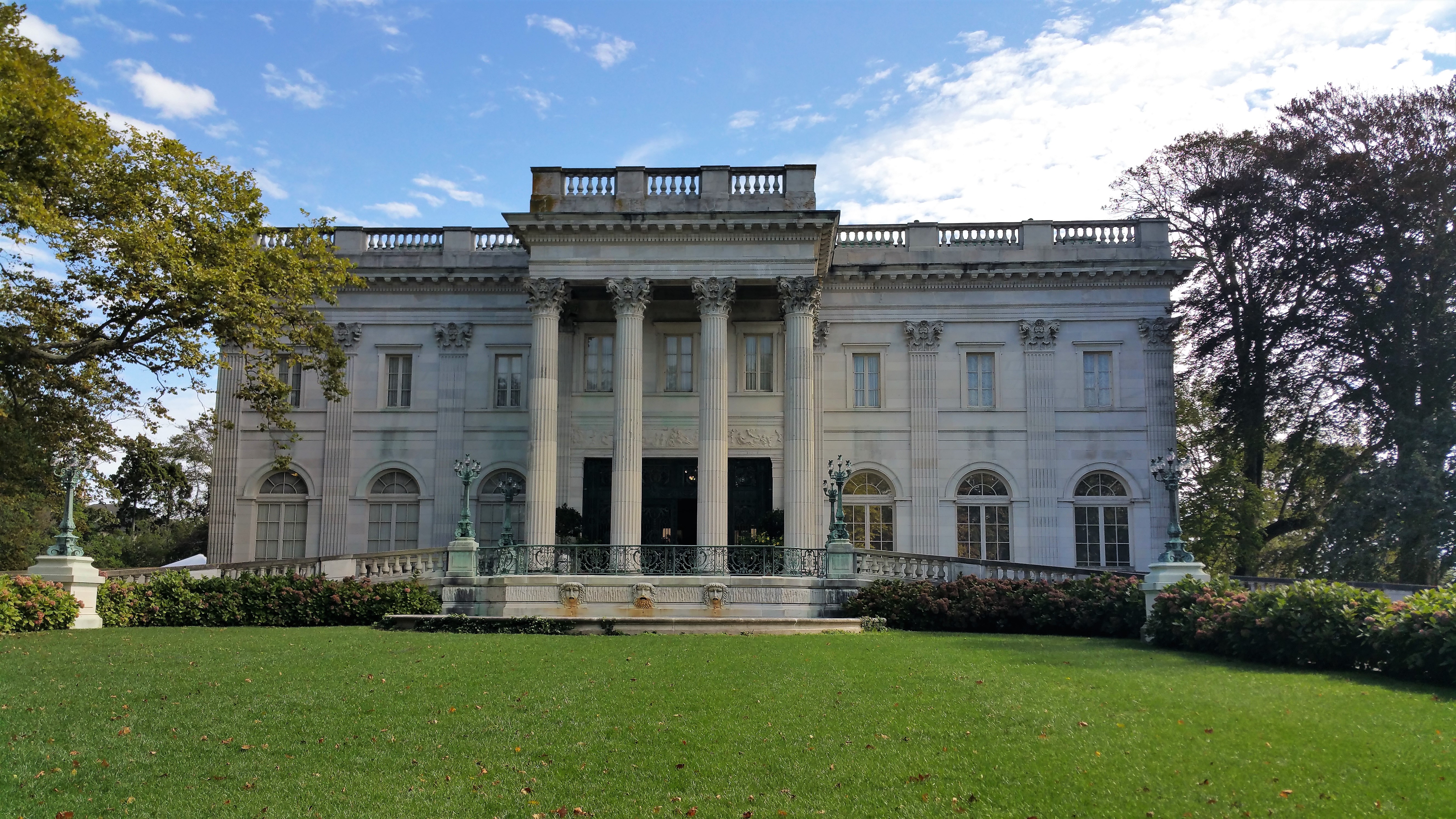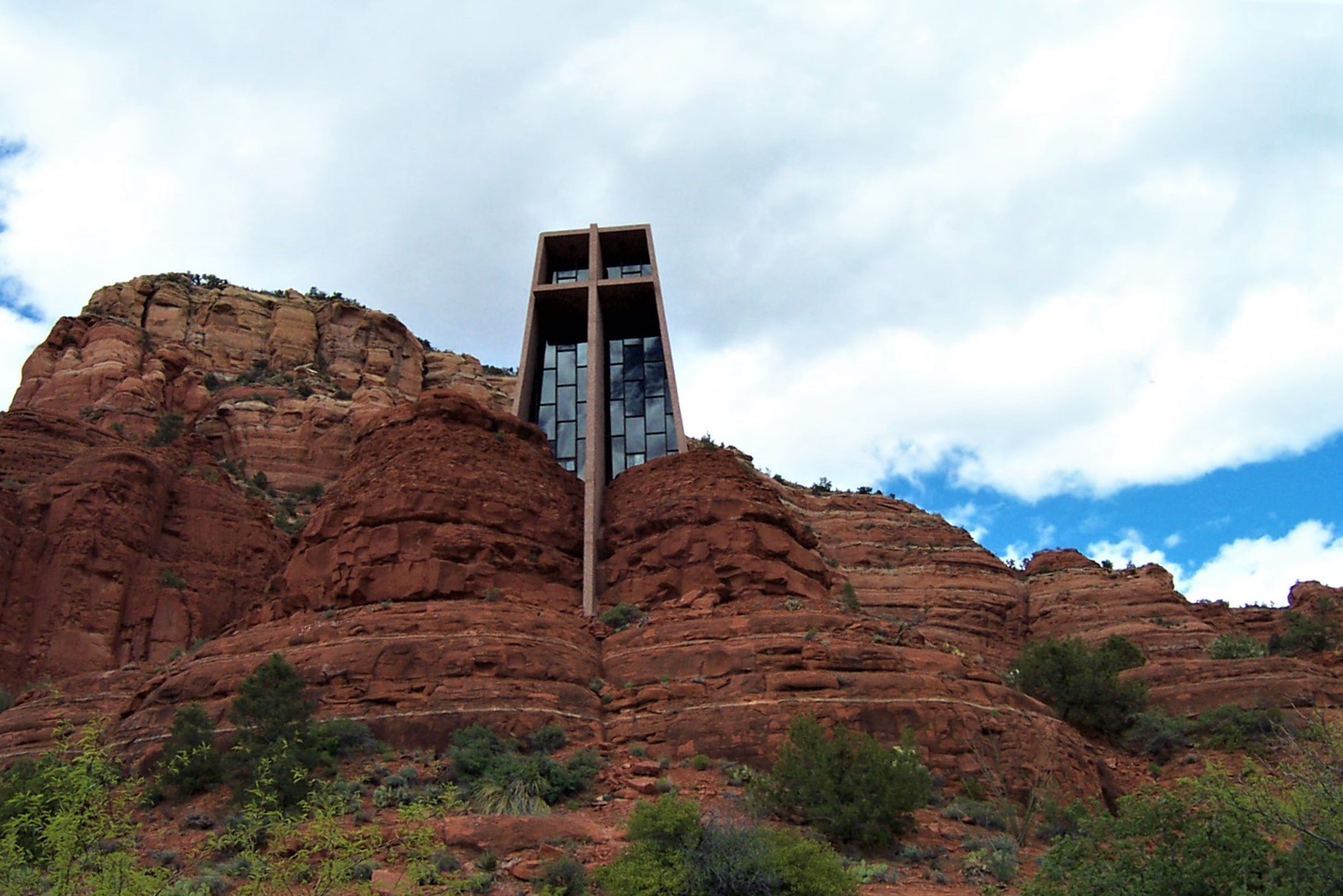
Chapel of the Holy Cross- Sedona, AZ
Sedona is nothing short of stunning; without question, one of the most beautiful locations in the United States. As you gaze across the rugged red landscape, it is impossible not to be awestruck by the powerful natural processes at work in the world. A transformative moment for many, including Marguerite Brunswig Staude, who built a chapel among the red rocks as a testament to her faith. As if placed by divine hands, the chapel seems to rise from the sandstone itself; born from the land, rather than built by man.
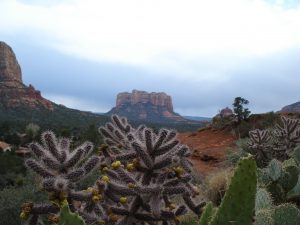
Staude, an artist and devout Catholic, was inspired to build the chapel after spying a shadowy cross superimposed on the newly constructed Empire State Building. Initially, she envisioned a modern glass skyscraper, covering a full city block. Her sketches excited Lloyd Wright, son of the legendary architect, who was eager to sign on the project. Unfortunately, the archbishop of Los Angeles, where she hoped to construct the church, did not agree with her vision, and her plans were rejected.
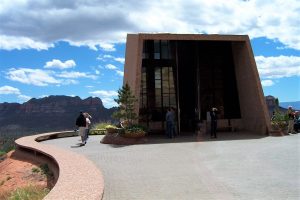
Not one to be dissuaded, Maguerite set out across the sea, and found a nunnery in Budapest who embraced her vision. The chapel would be built overlooking the Danube, fulfilling her life’s mission. However, before construction could start, the world changed. Europe was at war, and the plans were abandoned. Still, the idea stayed with Stuade, and following the death of her parents in the 1940s, she rededicated herself to the idea of creating a living spiritual trust.
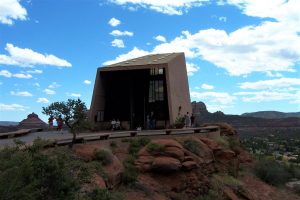
In 1950, inspired by a church designed by French artist George Rouault, her vision drastically changed. She now pictured a smaller, more intimate space. This change angered Lloyd Wright, who refused to modify his original design. Staude dumped the design dictator, and enlisted the architectural firm of Anshen and Allen, who enthusiastically embraced her revised vision. The project would move forward, only this time in Sedona, a spiritual site that spoke to Staude.
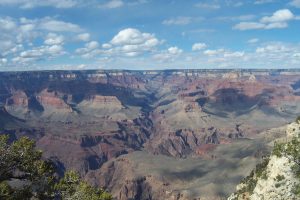
Upon spotting the perfect site from the air, Staude set out to obtain the land from the National Forest Service. After being rebuffed at the local level, she flew to Washington, and appealed directly to Arizona Senator Barry Goldwater, a personal friend. Goldwater in turn sold the Secretary of the Interior on the idea, and permission was granted. It never hurts to have friends in high places.
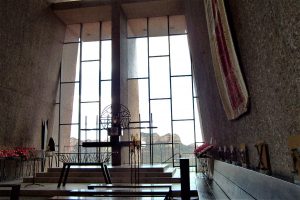
At long last, construction on the chapel began in April of 1955. The project took 18 months, and cost $300,000, a modest amount considering the complexity of the project. Costs were cut by all involved, who believed the project was a benefit for the greater good. Dedicated in 1957, it was immediately recognized by the architectural community, and lauded by the media, who spoke of its stark beauty. Built of aggregate concrete, glass and steel, it was truly a modern monument. The unadorned interior focuses your attention on the alter, and the magnificent landscape beyond, visible through a wall of windows. The exterior unobtrusively blends with its surroundings, with the cross dramatically rising from the rocks.
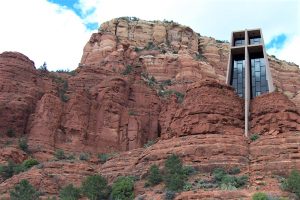
Initially, the local Catholic Church occasionally held services in the chapel, but the small size proved impractical for regular usage. Instead, the chapel became a sanctuary, a peaceful place welcoming people of all faiths. In 2011 the modern monument was added to the National Register of Historic Places, ensuring that the chapel will continue to offer inspiration for years to come.
